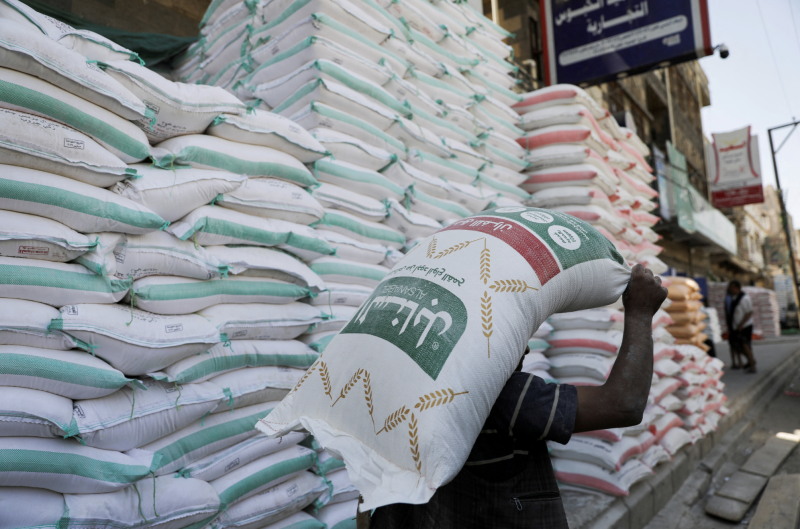Yemen Humanitarian Needs Overview 2021 (February 2021)
Context and Impact of the Crisis
Yemen remains the world’s largest humanitarian crisis and aid operation. The crisis is the result of a brutal armed conflict that escalated six years ago. It has killed and injured tens of thousands of civilians, causing immense suffering for the Yemeni people. In 2020, the conflict intensified, the number of frontlines increased from 33 to 49, and 172,000 people were displaced, bringing the number of Internally Displaced People (IDPs) to at least 4 million.
The economy and the currency continued to collapse as foreign reserves were depleted and the government was unable to subsidize food and other commodities for which Yemen is 90 per cent import-reliant. The situation was exacerbated by the global COVID-19 turndown which led to a sharp drop in remittances – the largest source of foreign currency and a lifeline for many families where 80 per cent of people live below the poverty line. As a result, millions more people cannot afford to meet their basic needs. A fuel crisis in the north, part of a dispute over the use of revenues, led to fuel shortages and price hikes. Government capacity to regularly pay salaries and pensions to public employees has been hindered and public services have been degraded.
Yemen is also vulnerable to natural hazards. Between April and August 2020, heavy rains and flooding devastated communities, causing deaths and injuries, destroying infrastructure and livelihoods, and increasing the spread of deadly diseases. Tens of thousands of families were affected, many of them already displaced. Other natural hazards pose a threat, including desert locust infestations, which are expected to cause damage and loss worth $222 million.
The impact of the drivers of the crisis is most visible in the growing risk of famine and severe acute malnutrition, disease outbreaks, conflict casualties, forced displacement and reversal of past development gains. In addition, the conduct of the parties to the conflict has had a profound impact on the aid operation – particularly humanitarian access, aid delivery and data collection.
Scope of the Analysis
This Humanitarian Needs Overview (HNO) analysis covers all 333 districts in Yemen; each has been affected by the humanitarian crisis. The analysis focuses particularly on the needs of IDPs, refugees, asylum seekers and migrants. Particular attention is given to the most vulnerable children, women, men, people with disabilities, older people, and marginalised groups such as the Muhamasheen.
Needs were assessed using the enhanced global Humanitarian Planning Cycle (HPC) approach and the corresponding Inter-Agency Standing Committee (IASC) Joint Inter-sector Analysis Framework (JIAF) global guidance which takes a holistic approach to needs and measures severity in Yemen against 15 intersectoral indicators. The reduction in the number of people in need in 2021 does not reflect an improvement in the humanitarian situation but arises from the introduction of the new enhanced methodology and accessible assessments.
Humanitarian Conditions, Severity and People in Need
Based on the 2021 HNO analysis, 20.7 million people – 66 per cent of the population – are estimated to need humanitarian assistance in 2021; 12.1 million people of whom are estimated to be in acute need. These people are facing crisis or worse levels of severity of needs, in obtaining the necessities of life, maintaining their health and wellbeing, and the coping strategies employed just to stay alive.
Food insecurity and malnutrition are the main drivers behind the number of people in need. 16.2 million people will go hungry this year (Integrated Food Security Phase Classification (IPC) Phase 3 or higher). This includes 5 million people facing emergency conditions (IPC Phase 4) and nearly 50,000 who were already experiencing catastrophe conditions (IPC Phase 5). Over 2.25 million cases of children aged 0 to 59 months, and more than a million pregnant and lactating women are projected to suffer from acute malnutrition in the course of 2021. In addition, over 15.4 million people are in need of support to access their basic water and sanitation needs, of whom 8.7 million are in acute need. Yemenis are increasingly forced to resort to negative coping mechanisms in relation to WASH access and behaviours, significantly heightening the risk of malnutrition and increasing WASH-related disease and outbreaks including, cholera and dengue. Protection of civilians remains a priority in Yemen. Some of the highest levels of vulnerability are concentrated in IDP sites where very few services are available.
Expected evolution of the situation over 2021
In 2021 the situation is expected to deteriorate further, and the severity of needs is expected to increase unless there is conflict de-escalation and an improvement in the economy and funding.
In the absence of a political agreement, violations of international humanitarian law (IHL) and international human rights law (IHRL) are likely to continue, causing civilian casualties and damaging critical infrastructure including hospitals, schools, main supply routes and economic markets. While armed conflict will continue to impede humanitarian operations, the response will predominantly be obstructed by bureaucratic restrictions. Violations against children are expected as economic hardship and a lack of access to education continue. These include family separation, child recruitment, child marriage, and exploitive forms of labour and child trafficking. IDPs, refugees, asylumseekers, migrants and people with disabilities are likely to remain in extremely vulnerable situations.
Protracted displacement of IDPs is very likely to continue to affect resilience and exacerbate existing vulnerabilities, resulting in higher needs and negative coping mechanisms.
Without the lifting of the blockade, macro-economic stability and an adequately capitalized central bank, the socio-economic environment is expected to decline further in 2021.1 Experts estimate that GDP losses endured in the first 5 years of the conflict could double to $181 billion if the conflict continues through 2022. The Yemeni rial is expected to continue to depreciate, severely affecting the purchasing power of the population. Recurring natural hazards will likely increase vulnerabilities and humanitarian needs in 2021. There is real risk of a major oil spill with potentially devastating implications for the population if the maintenance of the FSO ‘SAFER’ tanker, floating off the Red Sea Coast, is not conducted urgently.
The trajectory of the main epidemics and health risks affecting Yemen is expected to continue, with a severe impact on the physical and mental wellbeing of people across the country. The INFORM Epidemic Risk Index, indicates Yemen is 1 of only 11 countries assessed as facing ‘very high risk’ of infectious disease affecting humanitarian need.
Conditions are not expected to change in 2021 due to the severe vulnerability of the population and lack of capacity to contain diseases and provide treatment. COVID-19 has placed additional pressure on existing facilities and resulted in under-use of health services, complicating the delivery of services to prevent other diseases. This will compound the effects of growing food insecurity and limited hygiene and sanitation services, particularly for women and children, on preventable disease and the long-term effects of malnutrition, which is projected to worsen in many areas.
Partners are finalizing the 2021 Humanitarian Response Plan (HRP) prioritizing the critical needs identified in the HNO. The HRP is built on three key strategic objectives: preventing famine and restoring livelihoods; treating infectious disease; and providing protection.




